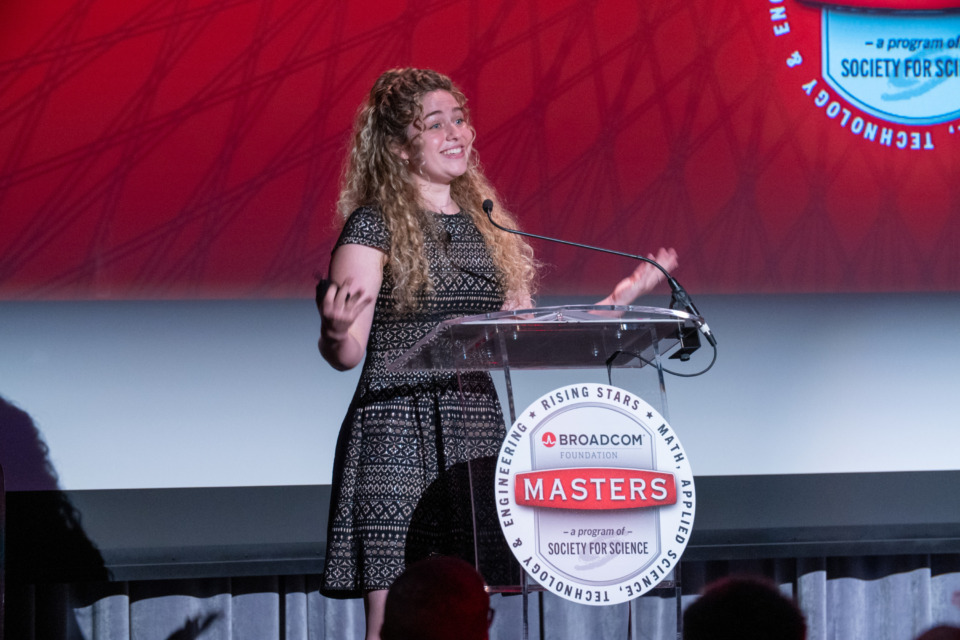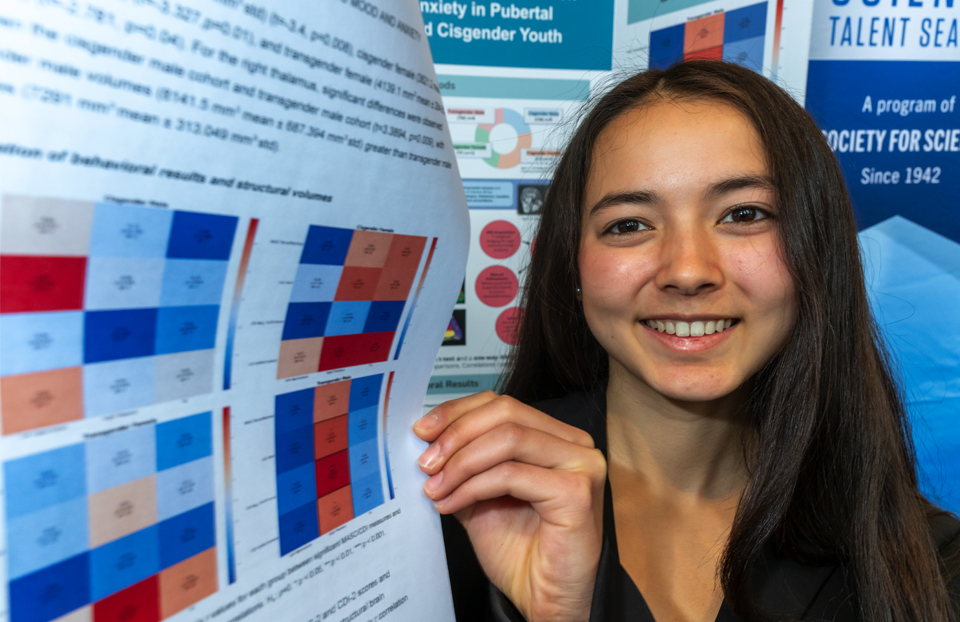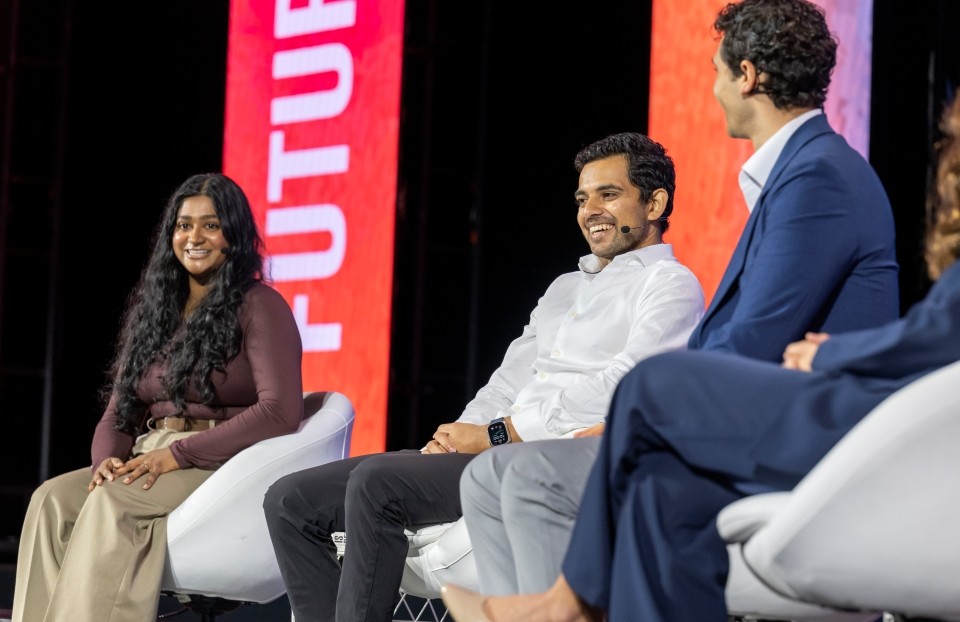This app detects depression
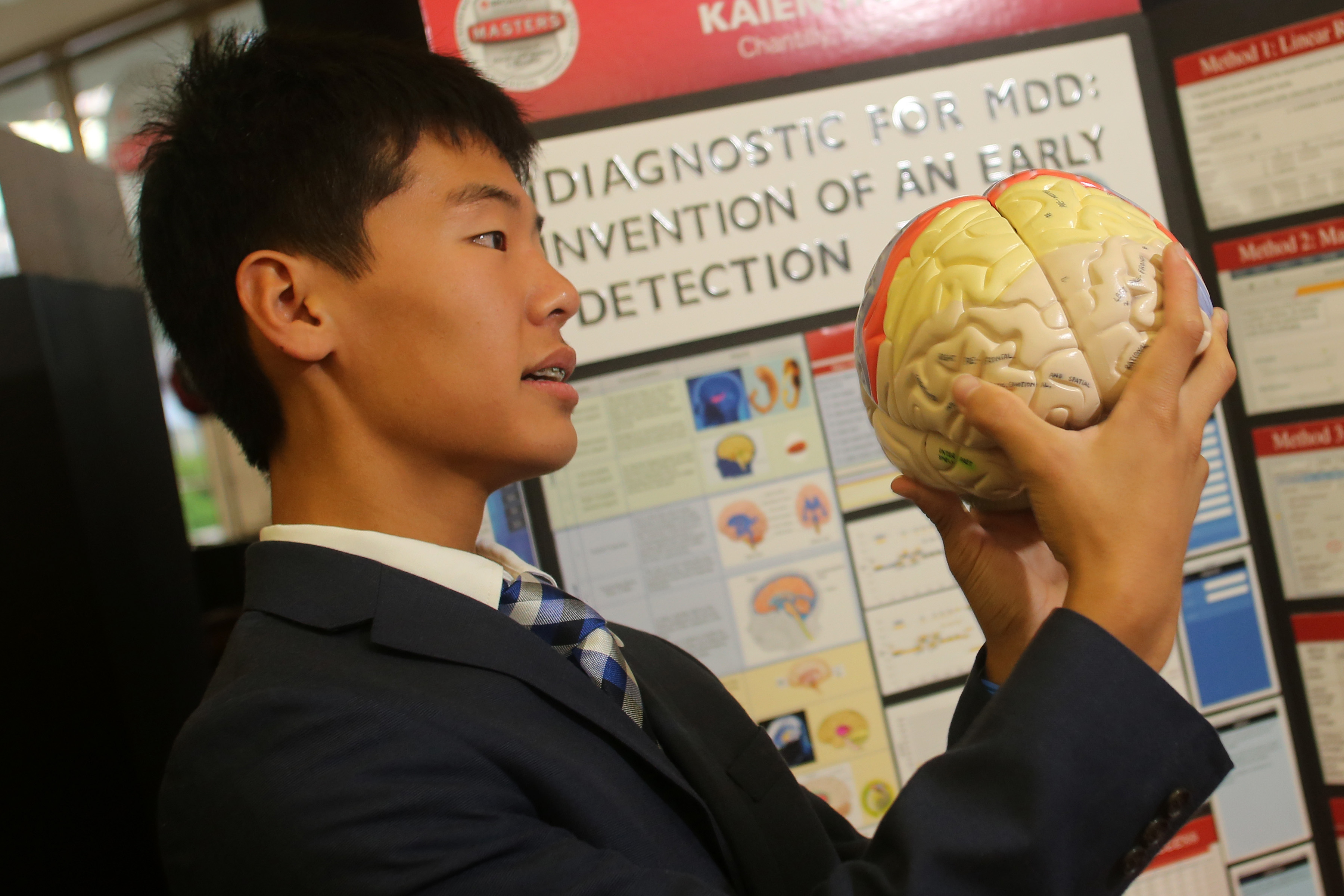
Depression affects about 350 million people of all ages around the world, according to the World Health Organization (WHO). The common mood disorder is the leading cause of disability worldwide.
One teen wanted to better understand major depressive disorder and how scientists can detect the illness, so he developed an early detection tool for depression.
For this project, Kaien Yang received the Marconi/Samueli Award for Innovation at the 2016 Broadcom MASTERS. Read on to learn just how many brains Kaien examined for his research, and how this app could help predict the risk for depression with 93 percent accuracy.
HOW THE TOOL WORKS: I developed an app that can help doctors detect depression based on shrinkages or expansion in certain areas of the brain. Doctors can potentially diagnose with the app by studying the hippocampus, which regulates memory, and output the probability of whether or not a patient has depression.
I collected MRI data on the brains of approximately 7,000 patients with major depressive disorder.
Shrinkage in an area called the limbic system is associated with major depressive disorder. My tool could predict the risk for the mental illness with an accuracy of 93 percent.
The early detection tool for major depressive disorder combines a psychological evaluation with data from magnetic resonance imaging (MRI). Imaging technology can reveal shrinkages in brains, but doctors often don’t look at the brains of people they treat for depression.
WHY HE WANTED TO HELP DOCTORS DETECT DEPRESSION IN PATIENTS: I first became interested in the brain because my grandfather had suffered from severe headaches and mood swings. He developed a shrinkage in the part of his brain called the cerebellum, near the back of the skull. And my mother underwent brain surgery in 2011, when I met world-renowned neurosurgeons and learned from them.
Support future young scientists. Join the Society today!
LOOKING AT 7,000 BRAINS FOR RESEARCH: I collected MRI data on the brains of approximately 7,000 patients with major depressive disorder. My sources were 135 peer-reviewed medical research journals published between 2000-2015.
I looked for correlations between depression and 14 independent variables. Those variables related to measurements for different parts of the brain.
My app can help doctors detect depression based on shrinkages or expansion in certain areas of the brain.
I experimented with different methods for data analysis, including linear regression, machine learning, and logistic regression. After several months, I hit a roadblock, until I learned about the irrational number e in math class. This number works as a natural logarithm and is also known as Euler’s number or Euler’s coefficient. I also learned about a statistical method called logistic regression, which also worked for my analysis.
HIS STEM GOALS FOR THE FUTURE: I want to apply science to improve life in neuroscience or other fields. I love all disciplines of science, whether it is chemistry, physics, biology, math, or astronomy (go astrophysics!).
My greatest joy comes when I’m able to connect the dots through these disciplines and come up with creative ways to solve real-world problems. Currently, I am working on artificial intelligence, neurotransmitters, and computer programing.
HOW HE BECAME INTERESTED IN SCIENCE: At a young age, I was intrigued by dinosaurs, rocks, geography, and the human brain. I engaged in many hands-on projects and problem-solving extracurricular activities such as the Science Olympiad, Science Bowl, and science fair projects.
I loved solving spontaneous challenges by connecting the dots on the spot. I also love working on long-term projects through many iterations of trial and error.
Broadcom MASTERS is truly the Olympics of science for middle school students.
My teammate Luke Thistlethwaite and I spent months building different versions of balsa bridges with the least weight to hold the maximal load. I learned about taking risks in science and learning from failures through my year-long project (which brought him to Broadcom MASTERS) of iDiagnostic.
HIS FAVORITE PART OF BROADCOM MASTERS: My favorite part is the fun and friendship with the finalists. I learned that Eleanor Sigrest and James Fagan both dream about being the first person on Mars. They would make a great team on the mission!
I learned about blacksmithing from Brendan Crotty and really want to visit him one day to be his new apprentice. I spoke Chinese, Spanish, and English with Olivia Lazorik.
Emhyr Subramanian and I became instant friends with our shared passion in classical music, environmental science, and Rubik’s cubes. The list can go on and on.
Broadcom MASTERS is truly the Olympics of science for middle school students. At end of the five-day finale, we all forgot that we were being judged and hung together as thick as thieves!

WHEN HIS NAME WAS CALLED FOR THE MARCONI/SAMUELI AWARD FOR INNOVATION: I was elated beyond words could describe when Dr. Henry Samueli announced me as the Marconi/Samueli award winner. I am so excited for the opportunities that lay ahead for me and for my friends at Broadcom MASTERS.
Our lives have been changed in amazing ways and our horizons have been expanded by the magic touch from the Broadcom Foundation, Society for Science & the Public, scientists, and judges.
The fun and team-building competitions celebrated applying science to real world problems through hands-on collaboration with the team members. Our group went seining in the Chesapeake Bay. We harvested small jumpy grass shrimp, flat potent hog chokers, clear and orange jellyfish, and tiny baby blue crabs. We learned about the fascinating history of the early computer; it was one-room-big! Without disclosing the details, all the challenges required cross-discipline knowledge and seamless teamwork.
Our lives have been changed in amazing ways and our horizons have been expanded.
Presenting my project to my peers, the judges, and the public was another highlight of the week. Fascinated with the brain at a young age, I especially appreciated the conversations with the neuroscientists, professors, and medical school students at Georgetown University and exchanged ideas to further advance my project.
I talked with Nobel Prize laureate Dr. Robert Horvitz and shared a passion in biology. I enjoyed every minute of talking to the public, young and old, about my project and sharing my love for science. Science connected people in a very profound way.
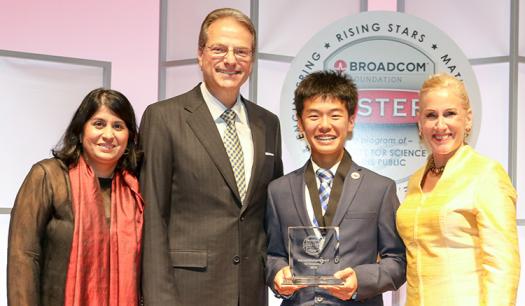
ADVICE FOR OTHER YOUNG PEOPLE INTERESTED IN STEM: Build something, tear apart something, re-build something, and play with something. These are activities that kids love to do, and you can inspire the next generation of scientists and problem solvers through these activities.
You can inspire the next generation of scientists and problem solvers through activities kids love to do.
Build a bridge, design a paper trail to move a marble the longest distance, apply the golden ratio in a painting, make a Rube Goldberg apparatus, fold an origami chair to be used in spaceships …
The sooner students can experience the “aha” moment of applying something they learned in the classroom to a real-life problem, the more inspired lifetime learners and inventors they will become.
